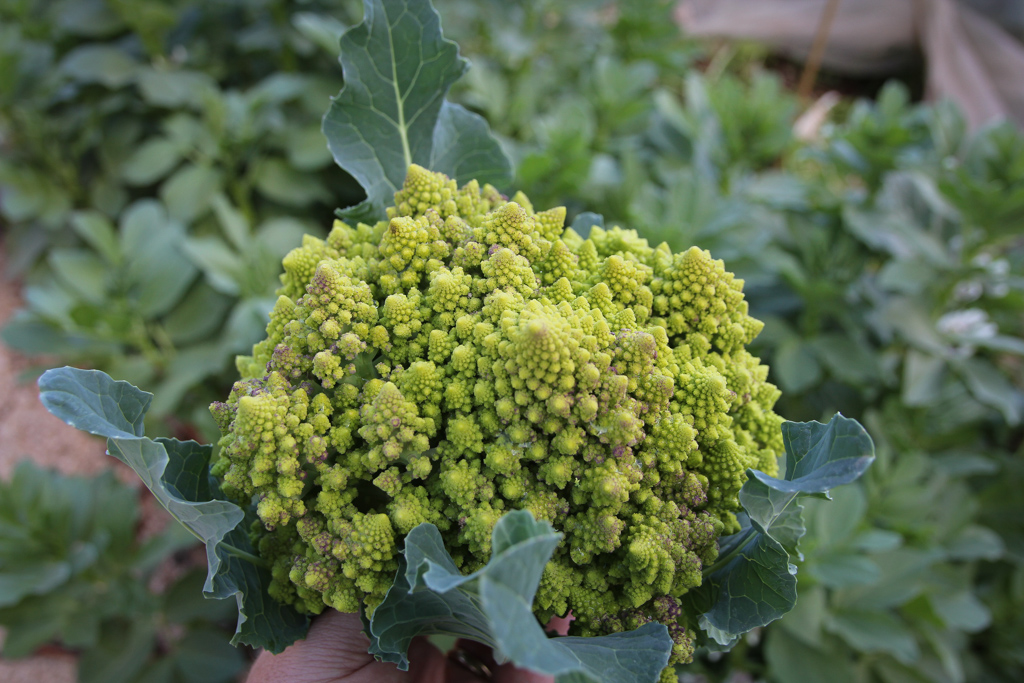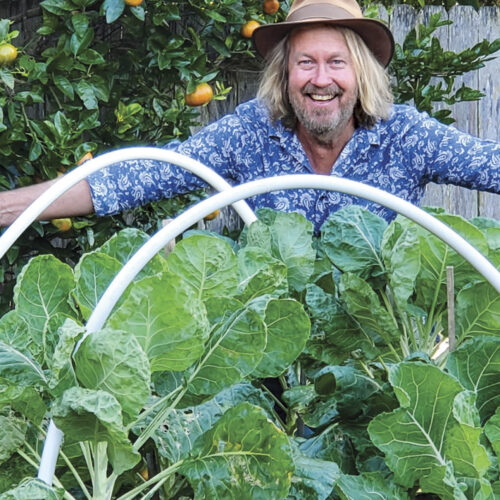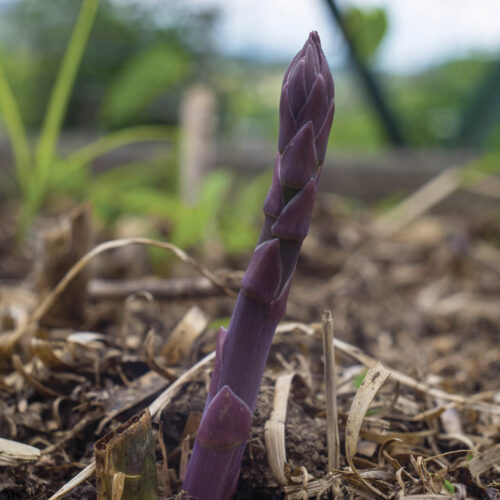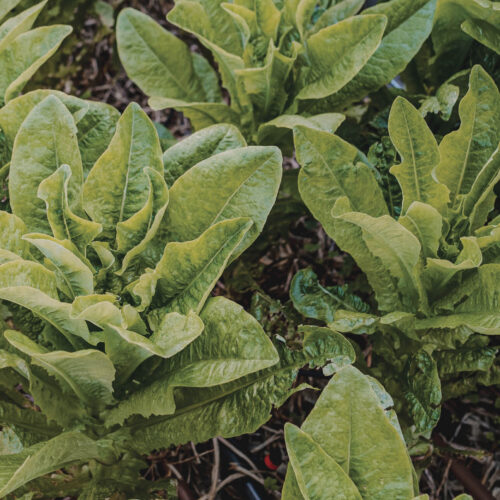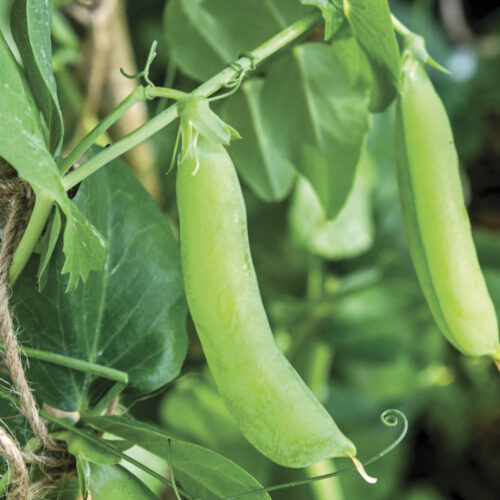A vegetable wonder
2014-08-08T05:26:27+10:00
JUSTIN RUSSELL harvests the unusual broccoli Romanesco and offers tips on growing these tricky brassicas.
Have a look at this. It’s a ‘Romanesco’ broccoli head, picked this morning and dazzling all and sundry in my household with its wondrous Fibonacci fractals and lime pigmentation. To be honest, the head is a week past its best, but that’s no problem. It’s still a thing of beauty and we’ll cut the head into smaller florets to transform them into a cheesy, creamy, spankingly delicious gratin. Having trouble getting the kids to eat broccoli and cauliflower? Trust me – try a gratin. It worked for me as a kid (under the less glamorous moniker cauliflower cheese) and it works for my fickle bunch as well.
If you’ve never grown a Romanesco before, they have a reputation for being finicky. As a general rule, though, the process is no different to growing any other broccoli or cauliflower. The ingredients for success are very fertile soil (that is slightly alkaline), consistent moisture during the growing season, and most importantly, close-to-perfect timing.
I can’t emphasise the latter point strongly enough. When you eat a brassica floret, you’re basically eating a bunch of unopened flower buds. They’re highly nutritious and mighty tasty, but the fact remains, they’re flower buds. If the plant is subjected to stress, however, be it in the form of warm weather or drought, those unopened flower buds will shoot for the sky and within days, burst open to reveal a mass of stunning yellow flowers. These are perfectly edible, but they aren’t quite as mouth watering as a plump floret.
If the aim, therefore, is buds not flowers, timing is crucial and it pays to think months ahead. For a winter harvest, I start my brassica plants anytime between late summer and mid-autumn. Slow growing types such as Romanesco and ‘Purple Sprouting’ broccoli go in the ground in February, with faster growers like sugarloaf cabbage and heading broccoli planted during late March. Some plants are ready to pick a few months after sowing, and depending on the variety, the harvest will continue well into spring. Purple Sprouting broccoli doesn’t really start producing florets until the weather warms in September – a good nine months after planting.
Obviously it’s a bit late to start most brassicas now, unless you’re gardening in a cold climate. If this is the case you could try getting in a spring crop of cabbages or green heading broccoli sometime during the next few weeks. The plants will be ready for harvest in late spring or early summer. For most Australian gardeners, however, your broccoli and cauli growing days have passed for another year and it’s simply a matter of being prepared for next winter. Get your timing right, and you too could be feasting on one of nature’s wonder plants, the Romanesco broccoli.
You can read about this and many other heritage vegetables in our ABC Organic Gardener Essential Guide: Heirlooms.

